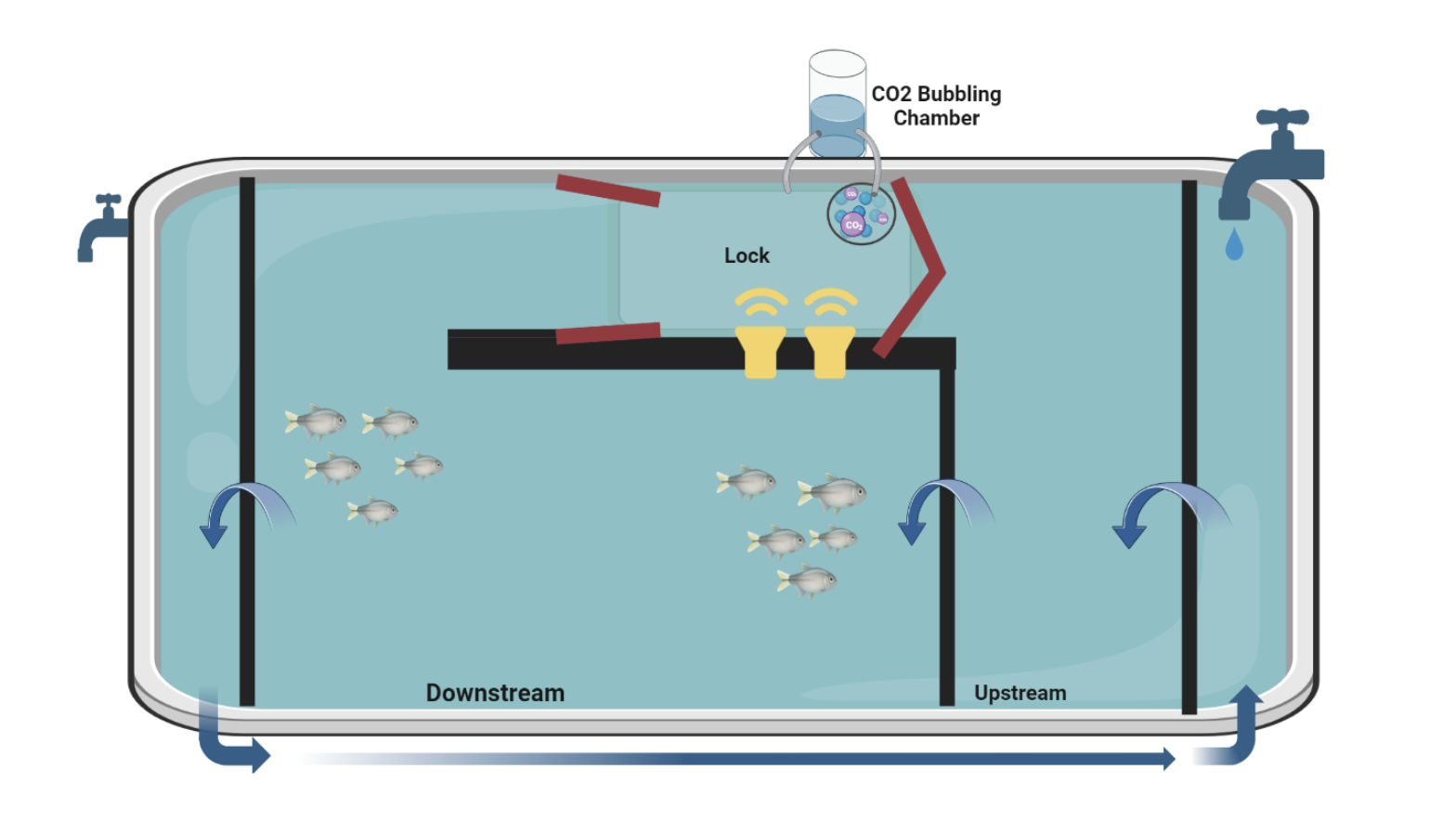
The project’s goals are to enhance and/or develop new barriers using carbon dioxide to deter the range expansion of invasive bigheaded carp. These fish continue to migrate northward and present a danger to Minnesota’s aquatic habitat. The locks and dams on the Mississippi River present strategic bottlenecks where non physical deterrents can be deployed to prevent upstream carp migration.
This research project is currently in Phase III:
MAISRC researchers have constructed a model lock and dam to assess how effective combined carbon dioxide and acoustic deterrents are in preventing bigheaded carp from passing through lock chambers. The researchers are conditioning the carp to associate sound with carbon dioxide, aiming to enhance the effectiveness of the acoustic deterrent while reducing the need for frequent CO2 application.
They are also investigating how water current affects the dispersal and flux of carbon dioxide in a large flume at the Saint Anthony Falls Laboratory. The migration of invasive bigheaded carp northward poses a threat to Minnesota's aquatic ecosystems. Although some deterrents, such as bioacoustics, have shown promise in laboratory settings, there's a need for improvements for practical deployment in the field.
This project focuses on understanding the sensory biology of carp and developing new technology to create a manageable model system suitable for field deployments, particularly targeting lock chambers as crucial bottlenecks. This research can benefit many entities, including the Minnesota Department of Natural Resources (MN DNR), United States Geological Survey (USGS), United States Fish and Wildlife Service (USFWS), and the U.S. Army Corps of Engineers.
